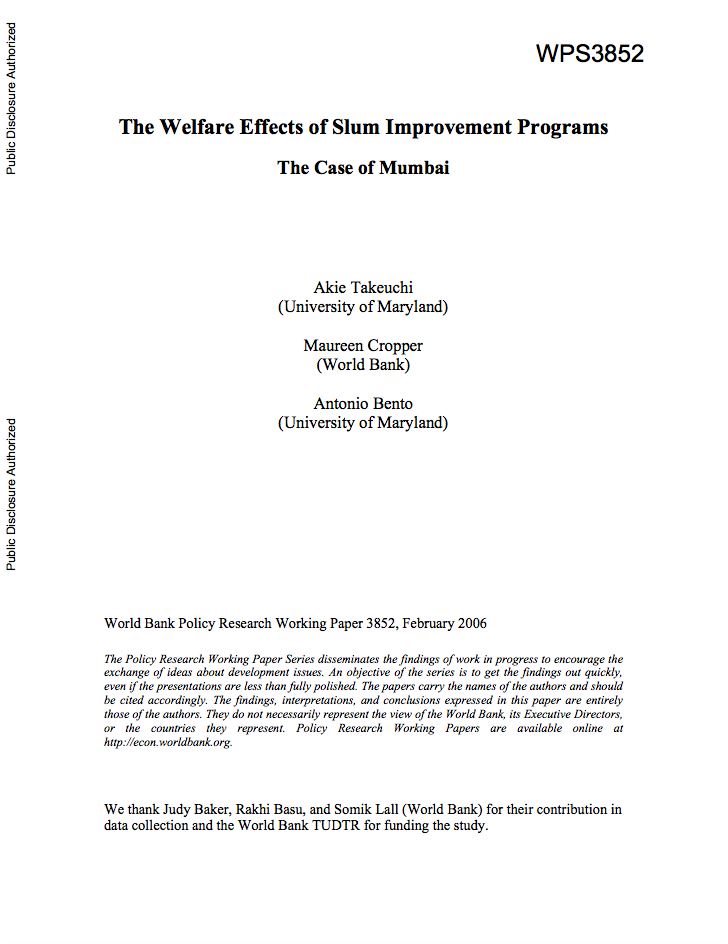The Welfare Effects of Slum Improvement Programs : The Case of Mumbai
The authors compare the welfare effects of in situ slum upgrading programs with programs that provide slum dwellers with better housing in a new location. Evaluating the welfare effects of slum upgrading and resettlement programs requires estimating models of residential location choice, in which households trade off commuting costs against the cost and attributes of the housing they consume, including neighborhood attributes. The authors accomplish this using data for 5,000 households in Mumbai, a city in which 40 percent of the population live in slums.


